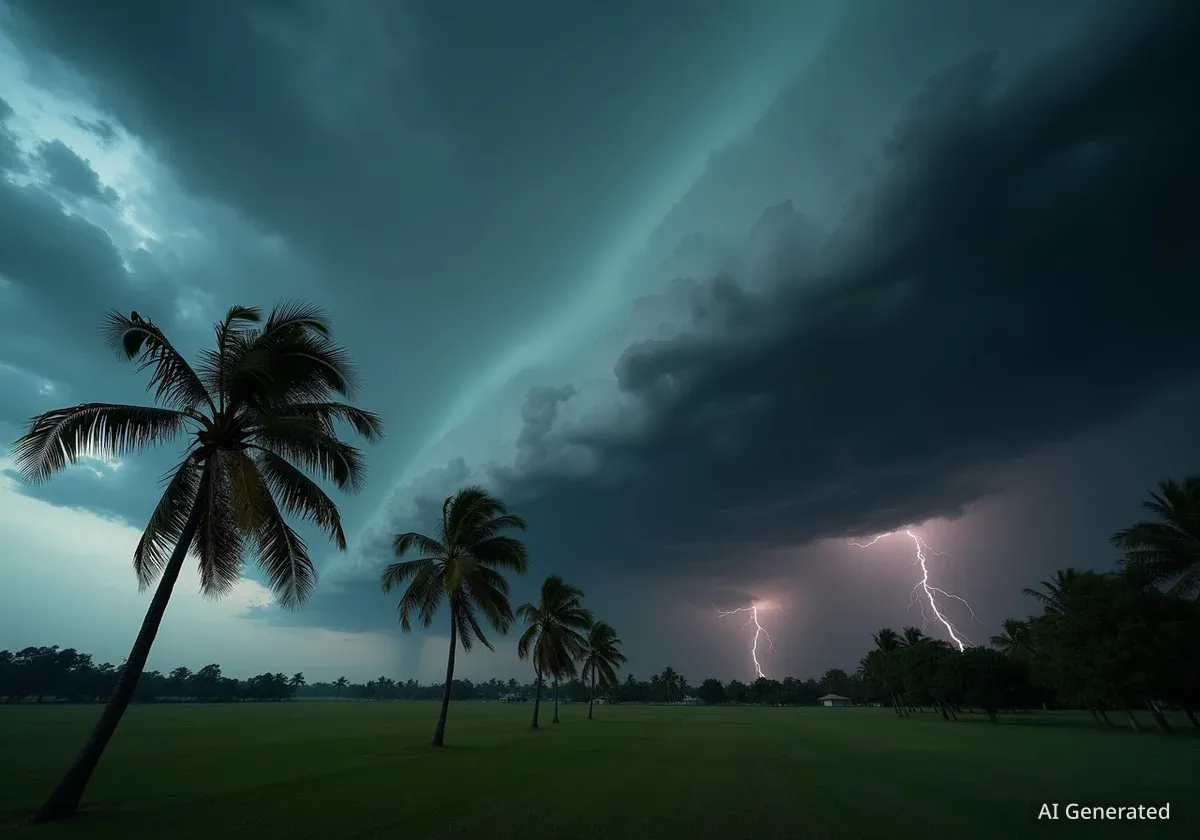Venice has brought back a long-standing tradition this All Souls' Day: a temporary floating bridge connecting the city to San Michele island, its historic cemetery. The 407-meter (quarter-mile) walkway allows residents to visit the graves of their loved ones on foot, a practice that stopped in the 1950s.
Key Takeaways
- Venice reinstated a temporary floating bridge to San Michele cemetery for All Souls' Day.
- The bridge measures 407 meters, allowing pedestrian access over the lagoon.
- This tradition, halted in the 1950s, was briefly revived in 2019 before the pandemic.
- It offers a unique, direct route for Venetians to honor their deceased.
- The bridge is initially for residents, opening to tourists later.
A Return to Tradition for All Souls' Day
On Sunday, November 2, 2025, mourners walked across the 'Votif' Bridge, a temporary floating structure. This bridge links Venice's Fondamente Nove area to the island of San Michele. The crossing allows a direct, solemn journey to the city's principal burial ground.
The original tradition involved lashing together Venetian peata boats, topped with walking planks. This method provided a simple, if temporary, path across the lagoon. It served as a vital link for families during the All Souls' holiday.
Historical Context
San Michele island became Venice's main cemetery in 1807. This followed a decree by Napoleon that burials should move away from the city center. The island is the final resting place for notable figures like American poet Ezra Pound and Russian composer Igor Stravinsky.
The Modern Revival of an Ancient Link
The practice of building a temporary bridge ceased around the 1950s. This was likely due to the increased availability of public water buses, which made the island more accessible. However, the city decided to revive this unique tradition.
The modern bridge uses modular pontoon construction. This design makes it robust enough to handle the lagoon's conditions. Officials state it can easily withstand high tides of up to 1 meter (over 3 feet).
"We have proposed it once more so we can reconnect history with living people," Mayor Luigi Brugnaro stated last week. "It’s a concrete journey. It’s not fake, not philosophical. By foot, over the water, a beautiful route that make you understand a lot of things about Venice."
Bridge Details
- Length: 407 meters (approximately a quarter-mile)
- Width: 15 meters (50 feet)
- Construction: Modular pontoon system
- Purpose: Pedestrian access for All Souls' Day
- Location: From Fondamente Nove to San Michele island
Impact on Residents and Visitors
The temporary bridge opened on Thursday, ahead of All Souls' Day. Initially, only Venice residents could use the 15-meter wide walkway through the Sunday holiday. This allowed locals to observe the solemn occasion with dignity and ease.
Beginning Monday, the bridge will open its access to tourists. This offers a unique perspective of the lagoon and the journey to the historic cemetery. For many, it presents a rare opportunity to experience a piece of Venetian heritage.
Antonio Vespignani, a resident, expressed his appreciation on Thursday. "I usually don’t go to the cemetery for various reasons, but I’m taking advantage of this very rare circumstance," he said. "It’s a way for me to visit my loved ones."
Other Temporary Bridges in Venice
Venice is famous for its hundreds of permanent footbridges. Yet, temporary bridges are a rare sight. Historically, the city has built temporary crossings only on two other occasions:
- Across the Giudecca Canal for the annual Feast of the Redentore in late July.
- Across the Grand Canal for the November 21 Feast of the Madonna della Salute.
The San Michele bridge is the longest of these three temporary structures. It traverses a relatively shallow part of the lagoon. The bridge design includes arches, allowing water taxis, buses, and ambulances to pass underneath without interruption.
Connecting Past and Present
The revival of the San Michele bridge is more than just a convenience. It represents a strong connection to Venice's past and its unique relationship with the water. For generations, this temporary link symbolized the city's reverence for its deceased.
Even as much of Venice's population shifts to the mainland, San Michele remains a central part of the city's identity. The bridge helps maintain this important cultural and spiritual link, ensuring that traditions endure despite modern changes.
Zhang Miao, a Chinese tourist, discovered the bridge by chance. She arrived on the island by ferry. "To return to the mainland, I used the bridge, which is much more convenient and, what’s more, it’s free," she noted.
The return of the floating bridge offers both practical benefits and a profound symbolic gesture. It allows residents to uphold long-held customs and provides a deeper understanding of Venice's rich history and cultural practices.





